Away
These Islands that Live within Us
Encounters with islanders and landscapes on the Magdalen Islands.
Text — Marie Charles Pelletier
Photos — Isaac LeBlanc
The Magdalen Islands captivate and move us: the red sandstone capes, the hills overlooking the sea, the swirling water, and the marks of wind and time that pass over sand beaches stretching out for miles.
The archipelago of 12 islands, made up of almost surreal dunes and cliffs, is located in the heart of the Gulf of Saint Lawrence, more than 200 km from the Gaspé coasts. Its landscapes conjure strength and fragility at once. The islands are immense, and at the same time lost way out in the middle of the sea. They take root in us and awaken our memories of windy evenings. The sea air, the wide open spaces, the golden light at the end of the day: some islanders have decided to never leave these treasures, or to come back as often as possible. These artists, chefs, nurses, entrepreneurs, and fishers living in Havre-Aubert in Old-Harry have a unique way of interacting, exploring, inspiring one another, and giving themselves over to these shifting landscapes.
“I sometimes have the impression that the land inhabits us, more than we inhabit the land. It has a very strong influence on us and our way of life. The land changes, as do we. We lose pieces of it, we discover others, and all of this reminds us how lucky we are to experience the islands.”
Here’s an islander’s look at the Magdalen Islands.
– ALPHIYA JONCAS –

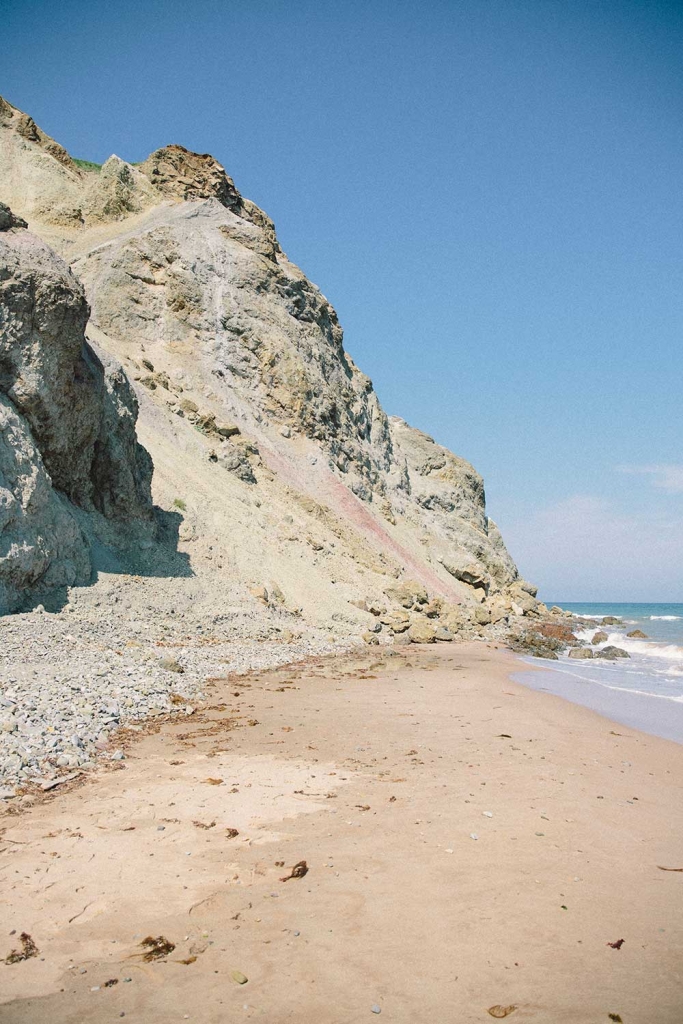
Alphiya Joncas is a Magdalen artist who makes photographic works using the landscapes that surround her. Born in Saratov, Russia, she grew up amidst the gale-force winds in Havre-aux-Maisons.
Alphiya loves grey weather. She also loves the light at the end of the day, when the sun takes up less space; and winter, when time slows down and the territory expands.
Alphiya lives everywhere and nowhere at once. She doesn’t have a home or a fixed address; she takes care of other people’s houses. The fact of regularly changing homes and moving from one island to the next feeds her artistic practice.
The Magdalen islander is interested in matter and in what it has to tell us. Through writing and photography, she comes closer to the elements and gives voice to the wind. She started by taking photos for pleasure. She liked to look at them when she was far away and missing her island-homes. But over time, photography became her way of taking ownership of pieces of the land, of grasping the essence. It was also a good excuse to head out exploring with no particular destination, letting herself be guided by chance, by something immutable.
“Photography allows me to go out and meet the territory.”
In one of her projects, the artist plays with juxtaposing her photos and making visible the horizon lines our eyes fill in when we look to the far-off, creating new spaces. She encourages us to see these lines as imagined havens. It’s a way, for her, of grounding herself and belonging to the land, befriending it and making it her home.
According to Alphiya, landscapes have a lot to teach us if we look at them closely. You have to pay attention to their depth and their reach, to the great sweeps of space in their simplicity:
“On the islands, we say ‘to air yourself out.’ That’s when the gusts pierce through you right to the bone. It’s this unique feeling you have when you get back from a long walk and feel yourself both emptied out and full; when you finally let all the energy of the place envelop you.”
– JACQUES LEBLANC –

Jacques Leblanc is a chef, a hunter, a fisher, a gatherer, and a leader of a good life. A native-born Magdalen islander, Jacques had to leave the islands for school, but he has never spent a summer anywhere else. It would be a sacrilege for any self-respecting islander. When he was younger he skateboarded and listened to heavy metal. Let’s just say folklore wasn’t at the top of his list. He admits that his time away led him to realize something: “If I had never left the islands, I would definitely be less sensitive to the environment around me, and I wouldn’t be the person I am today.”
His father was a seal hunter, as was his father before him. When Jacques was little, he listened closely to their tales about fishing but was not really initiated into this activity until he returned to the islands. Now he fishes for seal, his favourite meat. It’s one of the rare wild meats that has been commercialized (thanks to Réjean Vigneault, who established a protocol for harvesting, transformation, and conservation on the islands). Traditionally you let the fins simmer for a long time and cook the fillets. But this chef recommends instead cooking it rare, otherwise the meat can become dried out. And it also makes for a good tataki.
From June to September, Jacques is at the Bistro Plongée Alpha on the Pointe de la Grande Entrée. He draws inspiration from the territory, from that which grows wild and swims there. Among other things, he cooks trout in Laminaria, long brownish seaweed. It adds a touch of sea salt flavour to the fish, and a slightly earthy taste.
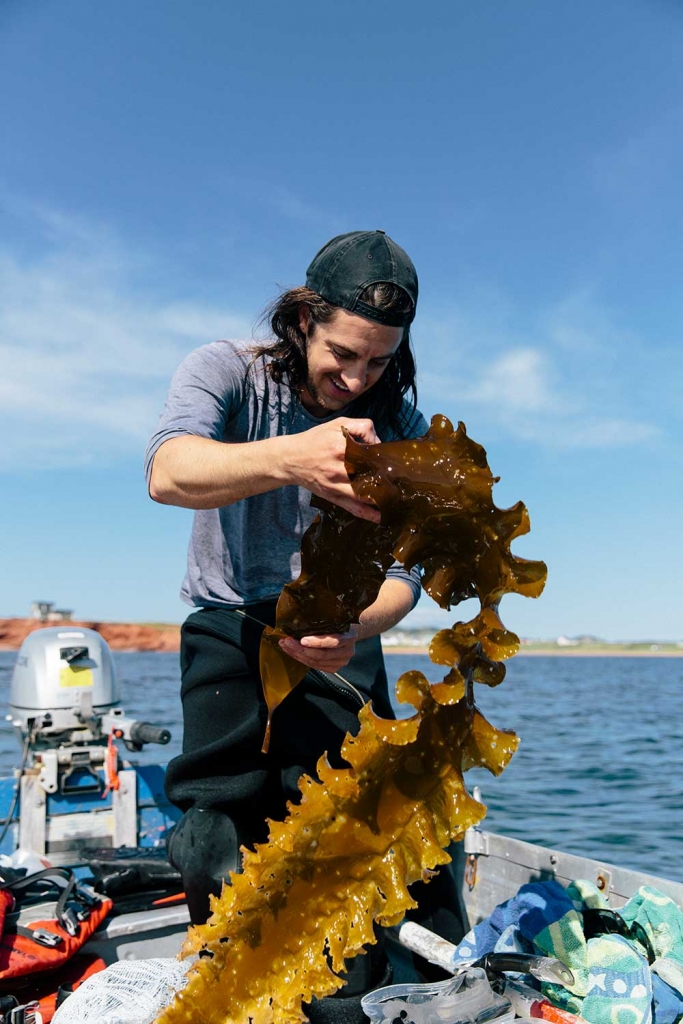
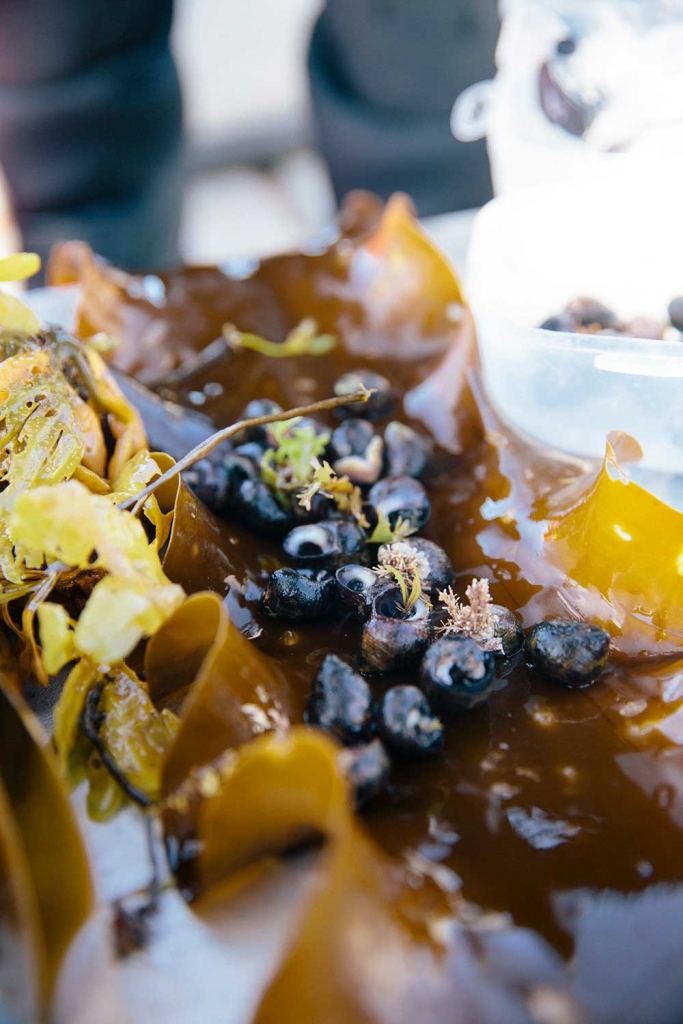
In summer, when he’s not standing over the ovens, Jacques can be found in the water. He surfs, fishes, and dives. He’s enamoured with everything related to the sea:
“When I haven’t been in the water for a couple of days, I start to get tired.”
In winter, when the restaurant is closed, he goes eel fishing — when the lakes are frozen but the ice isn’t too thick yet. He uses the traditional Mi’kmaq technique, with large harpoons of about 12 to 14 feet long which he plunges through the ice to chase out the eels hidden in the silt.
In the end, Jacques only left the islands to better return. Today he’s one of those who appreciate deeply the richness of these dune landscapes surrounded by water, but especially one of those who will carry on and continue to reinvent the traditions of this place.
– HANS WILLIAM KOENIG –


Hans has been spending summers on the Magdalen Islands for four years now. The first time he set foot here was significant. He remembers catching sight of Entry Island from the ferry and thinking this place was mythical. These islands, lost in the middle of the waters, seemed almost surreal. He describes the salt air and the sun hanging high in a cloudless sky like it was just yesterday. The first thing he did when he arrived was to eat seafood in a restaurant at the water’s edge. The owner started playing cello with the accompaniment of the wind. That was the moment he realized he was going to love it here, and that he was in a place unlike any other in the world. “The first time you come here, you wish you would have been born here,” he says in a bittersweet tone.
“The feeling of belonging of the people who live here is palpable. You feel that the Magdalen islanders love their land and are proud to welcome visitors. You see it, too, in the way they are conscious of the fragility of the place, and in the way they take care of it.”
Hans is an avid kitesurfer. We had to put off our conversation more than once because of the winds. “What’s so amazing with kitesurfing,” he says, “is that there’s literally no environmental impact. All you need is the wind, doesn’t much matter which way it’s blowing, because here it can come from 360 degrees.”
According to Hans, the best time to come to the islands is between the end of summer and the beginning of hunting season, in autumn. The wind is good, the sea is warm, and there’s no one else in the water.
He moved here officially a year ago. This man, who used to work for the CERMIM (Centre de recherche sur les milieux insulaires et maritimes) [Research Centre for Island and Maritime Environments], finally decided to shine a light on the area in a different way. Rather than doing applied research, he started a project with two of his friends: Le Kitetrip. Together they’ve created kitesurfing packages that allow tourists to discover the islands and the secret spots where the winds are best. The idea grew from their desire to share their love of the sport, and also a desire to share the beauty of the islands. They wanted to offer an authentic experience that draws upon their intimate knowledge of the place, in partnership with a number of other locals.
– NAOMI PHILION –
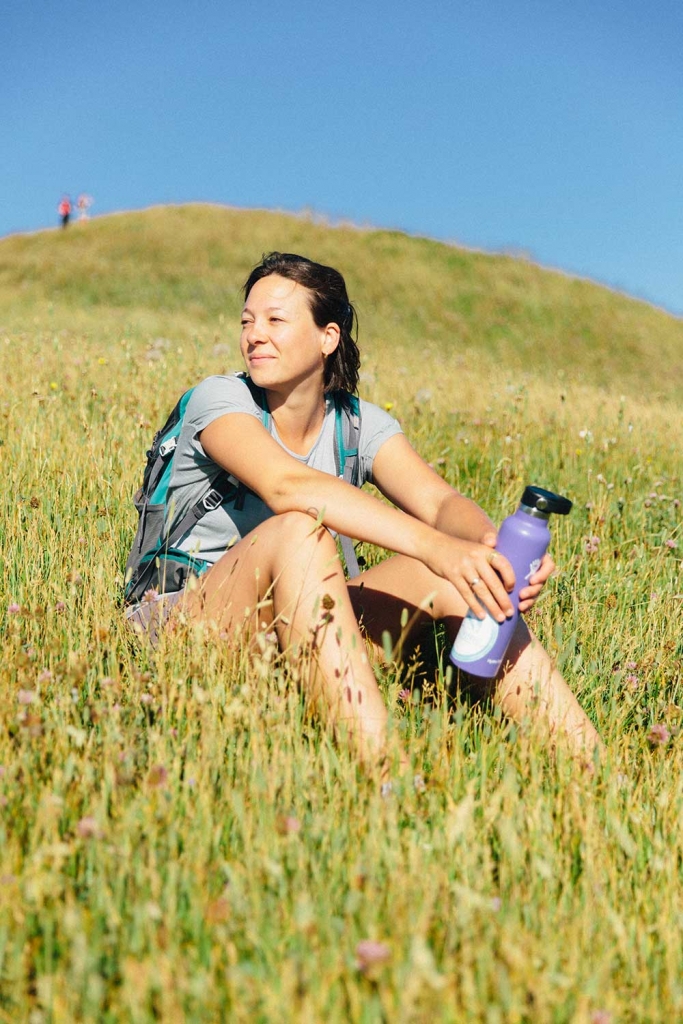

Naomi is a nurse who came to the islands in late spring and will leave again in early autumn. She was motivated by her taste for adventure, by the feeling that far-off places give, and by the chance to spend time near the water.
She remembers coming here in the summertime when she was 10 years old. The call of open spaces eventually brought her back, after a particularly difficult spring. When she arrived on the islands in May there were still no tourists around. No one but the other residents. And then she saw the boats beginning to arrive, the summer houses filling up, and the joy of the locals who were happy to welcome visitors, to see old faces again and to discover new ones.
The archipelago’s hospital is a primary health centre, meaning that patients who require specialized care are transferred elsewhere. Still, it filters all cases, which is a monumental task in itself. Naomi previously worked in a hospital with four intensive care units, each one extremely specialized.
She has three to four shifts here per week. At the end of her shifts, Naomi goes for her daily jog along the shore. After her run, she dives into the water. Or else she jumps off the capes, goes lobster fishing or paddleboarding. She explores the coasts by kayak, visits beaches and caves that are only visible at low tide, or else she explores the interior and the vast island territory by bike or in a New Beetle, with her windows open wide.
During her many excursions, and through the crosswinds, the small mountains have touched her in particular. She tells me about La Butte Ronde, which overlooks the lighthouse at Cape Alright, and the Demoiselles that stand proudly before the Baie de Plaisance. Naomi has to pinch herself every day: “I don’t always remember that I’m in Québec.”
She laughs and concludes, “What a bel été!” (a typically Magdalen expression).
– ATELIER CÔTIER –
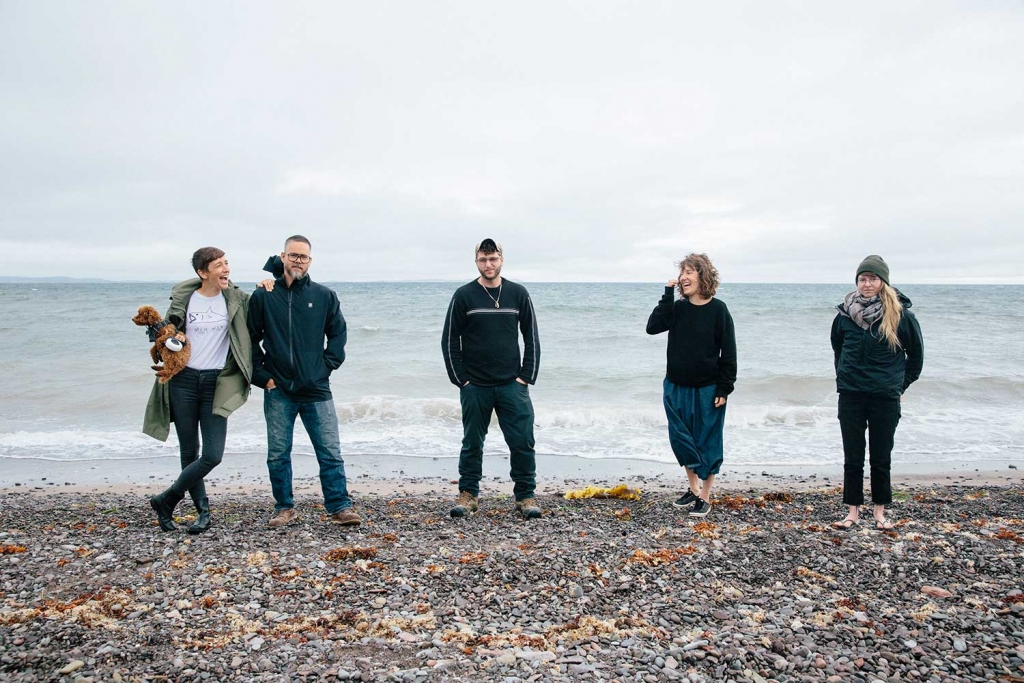
Atelier Côtier, formerly Artisans du Sable, is a must-see on the way to La Grave, where a whole team’s multidisciplinary creativity is on display. The sea intertwines with the materials in the concept of each work of art and each object featured here — a reminder of the territory these artists honour with their work.
Pauline-Gervaise Grégoire runs this creation space. She is the daughter of the couple who founded it, Albert Cummings and Nicole Grégoire, and today, she has taken the helm of the family business (even if she wouldn’t like to be described as such).
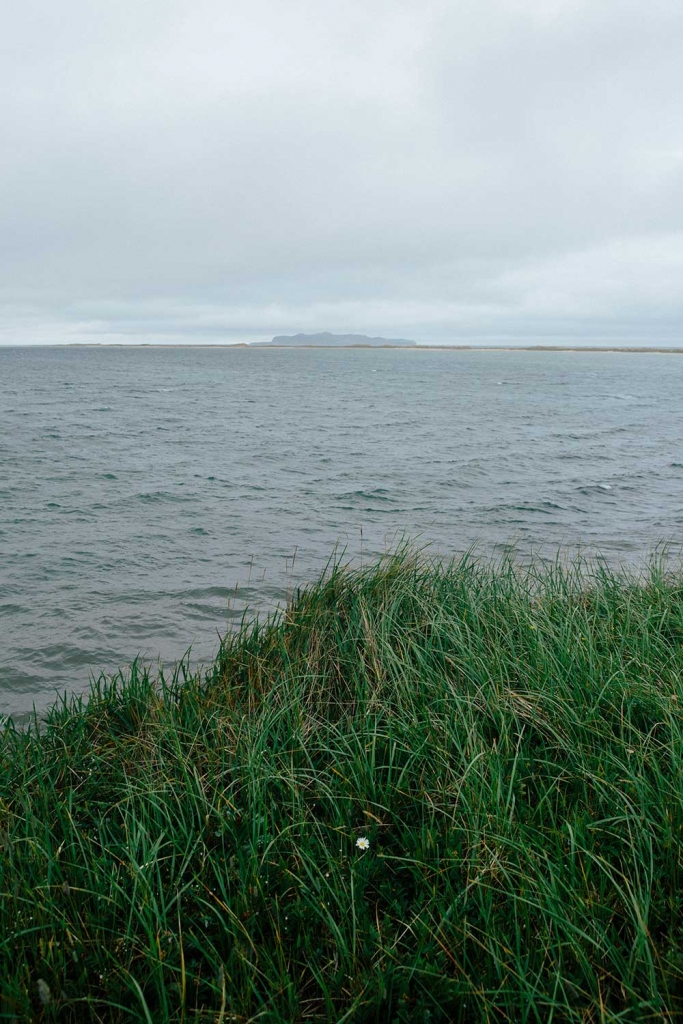
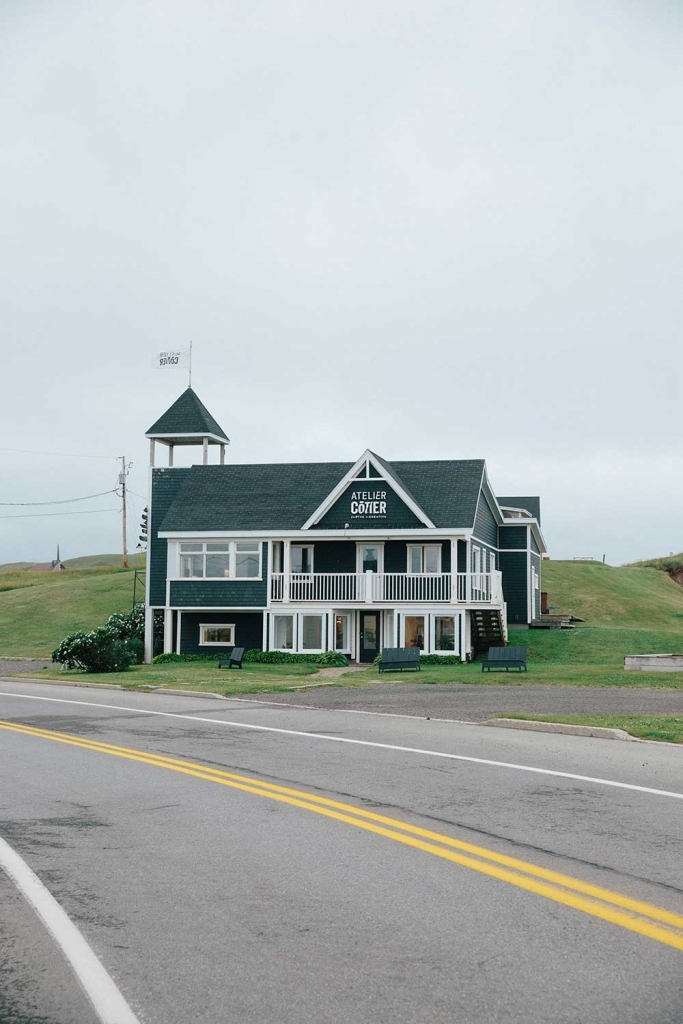
Pauline-Gervaise, who likes to take a dip around noon to clear her head, was born on the islands and has never left.
Together with Martin Fiset, her boyfriend, she has expanded the creative palette to leave room for creativity in all its forms and materials. Their process stems from the way each team member sees the territory and its elements.
Her parents are never very far. These two travellers and lovers of art are very aware of the trends. They continue to breathe new ideas into the workshop. Albert Cummings, now 75, also builds sandcastles twice a week. The Atelier Côtier is open year-round. Like the indomitable Gallic village, it braves the winter and overlooks the fort at Havre-Aubert. During the cold season, the team dedicates themselves to developing the business.
“Here, the wind never stops blowing. And it’s always full of scents. During wild strawberry season, you can smell them on the breeze. And when there’s a storm on the islands, it’s like having a front-row seat as nature lets loose, and the elements answer one another.”
“Here, the wind never stops blowing. And it’s always full of scents. During wild strawberry season, you can smell them on the breeze. And when there’s a storm on the islands, it’s like having a front-row seat as nature lets loose, and the elements answer one another.”
The light on the islands seems to be constantly creating new shades of grey, blue, melancholy or quietude. “I could take a photo of the sea each day and I would never get tired of it,” says Pauline-Gervaise. There’s something, too, about seeing the horizon all around, no matter what angle you look from.
For Stéphanie, a creator at the Atelier, it’s a privilege to live on such fragile land, in the midst of the elements:
“With the visible erosion, the disappearance of the land becomes very concrete. You can see it in the fall, during the windstorms that literally devour the dunes and the coasts. In the spring, when the thaw speeds up, you’ll sometimes see huge pieces of the cliffs detaching and falling into the sea. It’s fascinating and terrifying at once. Living in a place that’s disappearing into the ocean confronts us with the environmental crisis that awaits us all.”
The team at the Atelier Côtier is tightly woven, like a beautiful catalogne blanket in the colours of sea, sand, and undulating buttes. So I asked them to describe their favourite landscapes to me:
“The village of L’Anse-à-la-Cabane. That’s where I lived when I arrived on the islands. I love when the warm summer mists envelop the landscape. It makes you feel like you’re walking in a dream.”
“The Dune de l’Ouest, in summer, with a nice southwesterly wind to do a ‘downwind’ on the kitesurf. From L’Étang-des-Caps all the way to Corfu. The company of a few friends, the turquoise water, the feeling of being in communion with the elements. I also like hanging out on the docks in the fall, because the light is beautiful at that time of year. I especially like the ones at Millerand and Grande-Entrée.”
“The butte at Mounette, in Havre-aux-Maisons, a stone’s throw from my house. It’s a place I go every day, or almost. When you get to the top of the little mound of earth, you get a 360-degree view — in clear weather you can see the Dune du Nord, Entry Island, and the Island of Havre-Aubert. It’s an amazing spot for sunsets!”
– BERTRAND MIOUSSE –
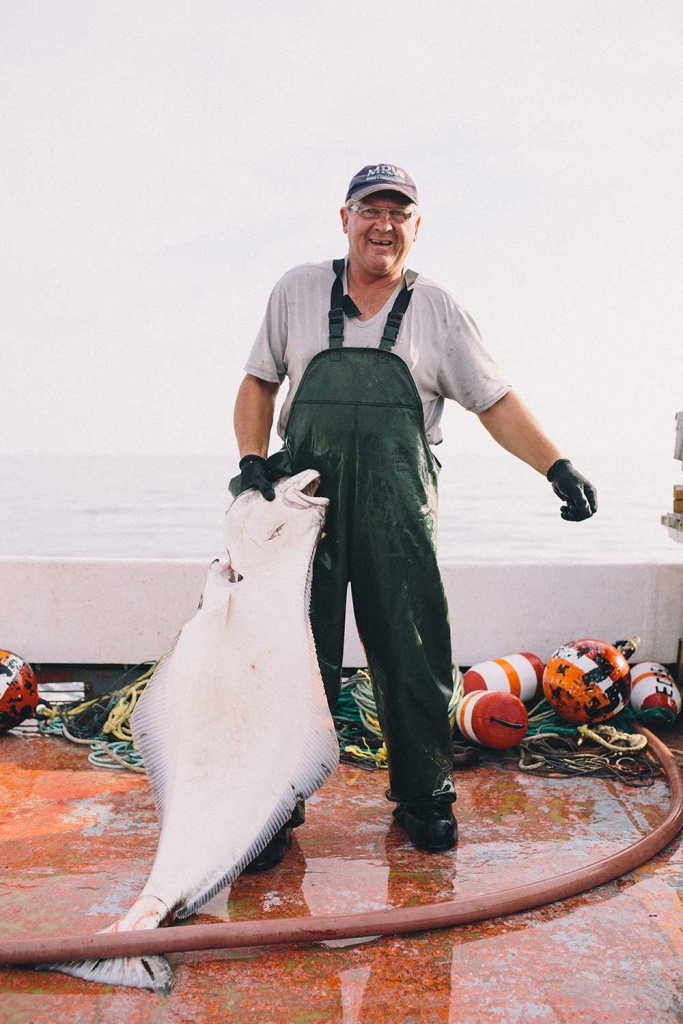

Bertrand Miousse has been fishing forever. As a deckhand on lobster and crab-fishing boats, Bertrand, who is now in his sixties, has spent more time on the water than on land. We didn’t get a chance to talk to him, since he was off at sea for several weeks. He also works as a tug master on boats in Québec’s far north. Here, he catches halibut between L’Étang-du-Nord and Corps-Mort.
And what we might not know about the islands…
- “You can go surfing on the islands! Depending on the winds, some beaches become surf paradises.”
(info from Stéphanie Bernier) - “Cranberries grow naturally (and abundantly!) on the islands, near the dune areas. The harvest stretches from the end of autumn until the first snows.”
(this information also obtained from Stéphanie Bernier) - “Hockey culture is very present. I’ve never seen so many people play as I’ve seen here. Every pond becomes a skating rink, it’s intense.”
(info from Hans William Koenig)
Never Miss Another Issue
Two issues per year
25% OFF previous issues
Free Shipping in Canada



